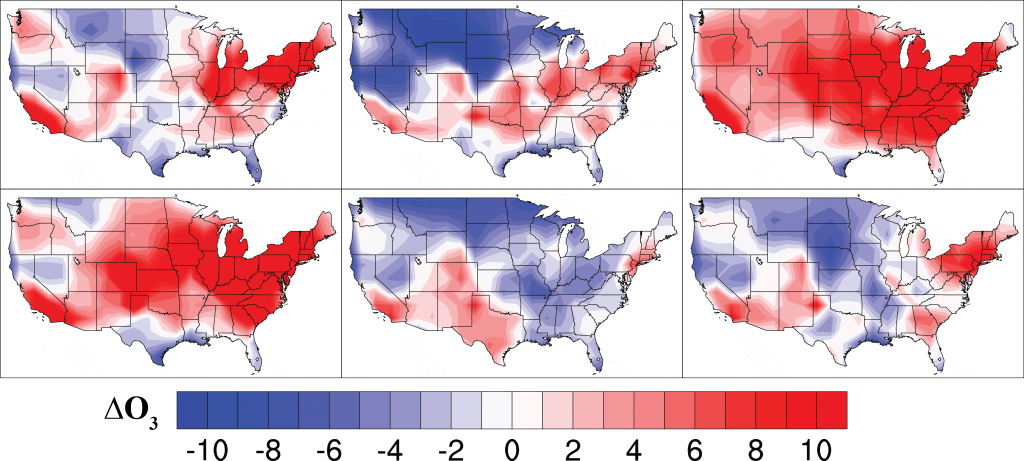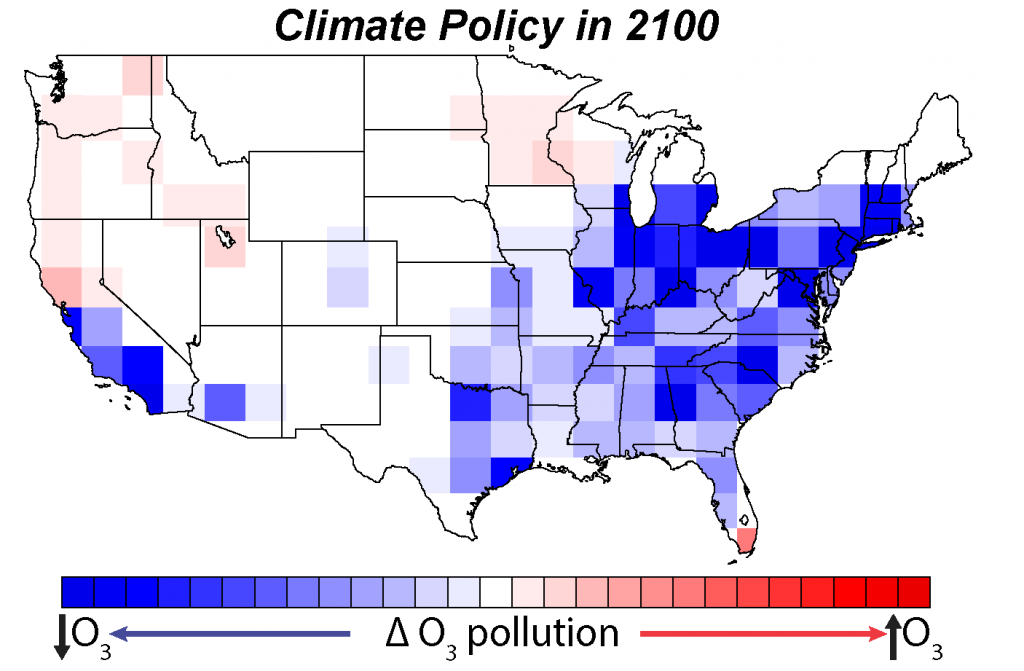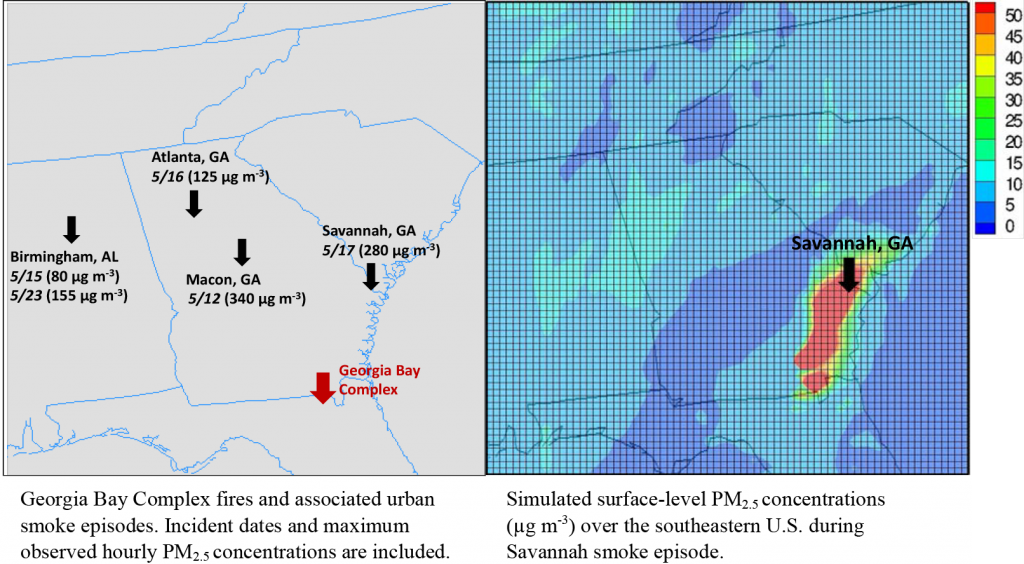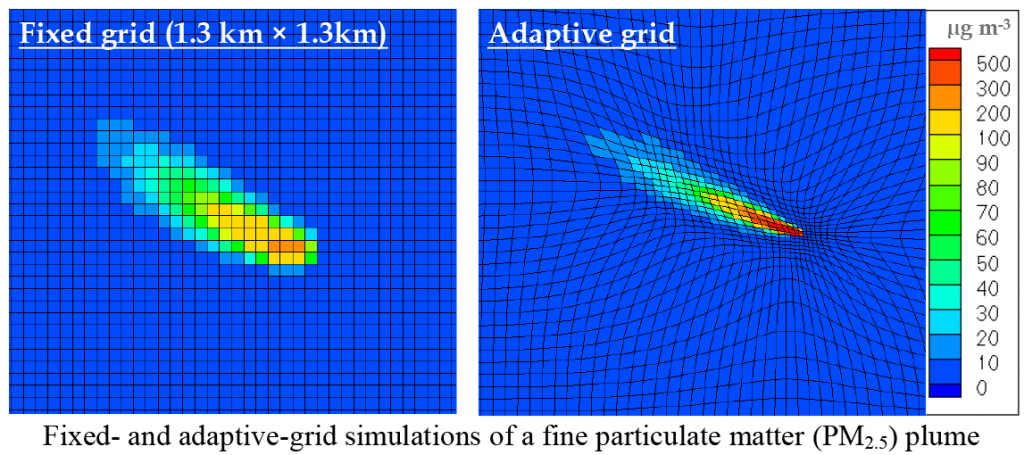Uncertainty in climate – air quality modeling: Although chemical transport models and global chemistry-climate models have been used to explore the influence of climate change on air pollution, large uncertainties associated with climate simulations strongly propagate to air pollution projections. These uncertainties must be better understood to strengthen climate impacts assessments. This research evaluates and compares how the main drivers of uncertainty in climate simulations, emissions scenario, model response and natural variability, propagate to estimates of future air quality. Towards this end an ensemble simulations of 21st century climate change including thousands of years of modeled air quality is developed. Results indicate that the uncertainties due to natural variability and climate sensitivity, largely overlooked in air quality impact analyses, may be as significant as that associated with greenhouse gas emissions scenario.

- Garcia-Menendez, Monier, E. and Selin, N.E. (2017) The role of natural variability in projections of climate change impacts on U.S. ozone pollution. Geophysical Research Letters. (link) (data)
Climate impacts on air quality and health: As part of EPA’s Climate Change Impacts and Risk Analysis (CIRA) project, this work evaluates the effects of climate change and climate policy on U.S. air quality and health using integrated economic, climate, and air pollution projections. The modeling framework is based on the MIT Integrated Global System Model coupled to a global atmospheric chemistry model (CAM-Chem) and health/economic impacts model (BenMAP). An ensemble simulation of 21st century climate change is used to assess the “climate penalty” on air pollution under different policy scenarios and compare the value of air quality-related health benefits derived from slowing climate change to mitigation costs. Simulations suggest that climate change, exclusive of variations in pollutant emissions, can significantly impact air quality across the U.S. and increase associated health effects. Greenhouse gas mitigation efforts can substantially reduce these impacts and climate-specific air pollution health benefits alone can offset a significant fraction of policy costs. Ultimately, these results reveal that the impacts of climate change on air pollution should not be overlooked in climate policy analyses.

- Garcia-Menendez, F., Saari, R.K., Monier, E. and Selin, N.E. (2015) U.S. air quality and health benefits from avoided climate change under greenhouse gas mitigation. Environmental Science & Technology. (link)
Fires and air quality: Wildfires and controlled burns can significantly affect air quality across large domains. In addition, fire pollution plumes are an excellent example of a multiscale atmospheric phenomenon with important fine-scale characteristics as well as impacts at regional and continental scales. Using coupled regional-scale air quality, Lagrangian dispersion, and fire emissions models, this work has studied the uncertainties associated with fire-related air quality forecasts and developed tools to improve model performance. Sources of uncertainty explored include fire-related emissions, spatiotemporal allocation of emissions on Eulerian grids, meteorology, plume rise, and model resolution. Findings provide useful guidance to environmental and land managers about the potential impacts of fires and limitations inherent to air quality models in fire-related simulations.

- Garcia-Menendez, F., Hu, Y. and Odman, M.T. (2014) Simulating smoke transport from wildland fires with a regional-scale air quality model: Sensitivity to spatiotemporal allocation of fire emissions. Science of the Total Environment, 493, 544–553. (link)
- Garcia-Menendez, F., Hu, Y. and Odman, M.T. (2013) Simulating smoke transport from wildland fires with a regional-scale air quality model: Sensitivity to uncertain wind fields. Journal of Geophysical Research, 118, 6493–6504. (link)
- Achtemeier, G.L., Goodrick, S.A., Liu, Y., Garcia-Menendez, F., Hu, Y. and Odman, M.T. (2011) Modeling Smoke Plume-Rise and Dispersion from Southern United States Prescribed Burns with Daysmoke. Atmosphere, 2, 3358-388. (link)
Adaptive grid modeling: Adaptive grids are a powerful numerical tool that enable simulating important small-scale processes, help reduce the need for subgrid-scale parameterizations, and ultimately provide insight into air pollution dynamics unattainable with existing air quality models. An adaptive grid method has been implemented on the Community Multiscale Air Quality Modeling system (CMAQ), a state-of-the-science chemical transport model. The adaptive grid algorithm allows traditional constraints on model resolution to be overcome by dynamically restructuring the solution grid in response to any model variable. In simulations featuring concentrated plumes, the method has been shown to reduce numerical diffusion, improve attribution of air quality impacts, and produce more accurate concentration predictions.

- Garcia-Menendez, F. and Odman, M.T. (2011) Adaptive Grid Use in Air Quality Modeling. Atmosphere, 2, 484-509. (link)
- Garcia-Menendez, F., Yano, A., Hu, Y. and Odman, M.T. (2010) An adaptive grid version of CMAQ for improving the resolution of plumes. Atmospheric Pollution Research, 1, 239-249. (link)

